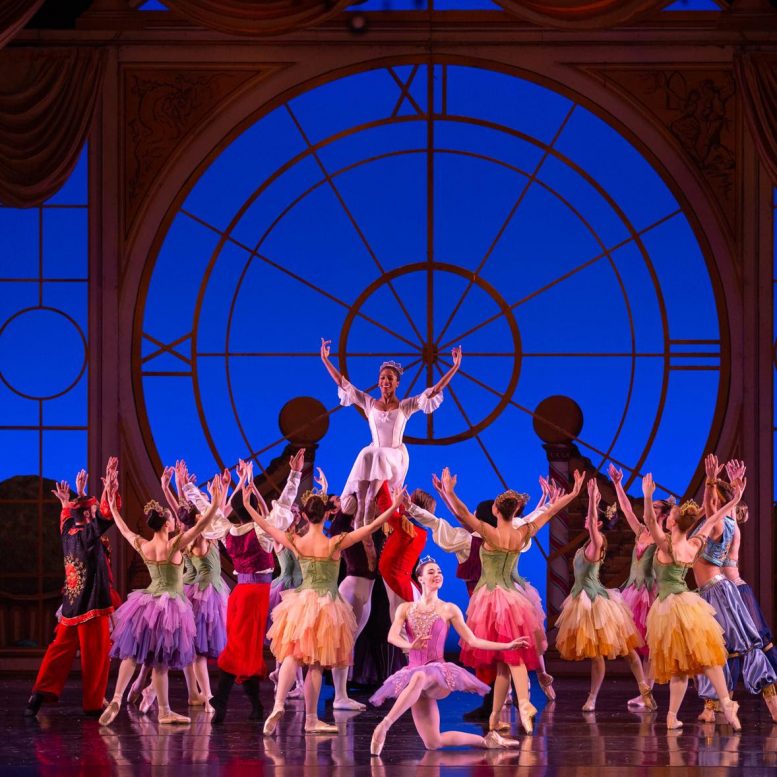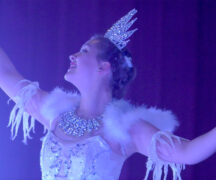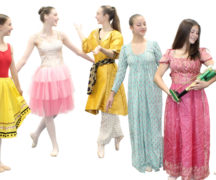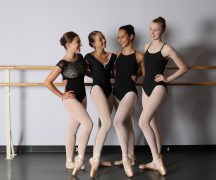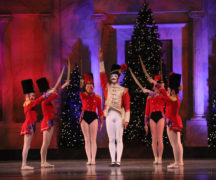By DAVID DUPONT
BG Independent News
Despite all the blandishments to make attending “The Nutcracker” a holiday tradition, neither my family nor I have.
So this season was rather odd because I ended up seeing three traditional versions of the Tchaikovsky’s beloved ballet: the inaugural staging by the Black Swamp Fine Arts School in Bowling Green; the 79th staging by the Toledo Ballet; and finally presented by BalletMet in Columbus.
So I saw one of the newest productions in Bowling Green and the oldest in the country in Toledo.
Yes, once when the kids were in elementary school we did venture up to Toledo — I’m thinking this was paid for by a gift from an aunt — to see the Toledo Ballet’s version. We enjoyed it well enough, but it never found a place in our holiday bustle.
Not that “The Nutcracker” has been absent. Primarily, the music was heard in our household in the form of Billy Strayhorn’s arrangements of “Nutcracker” selections for the Duke Ellington Orchestra. This is the first holiday music to find its way to the stereo every late November, and the last to be heard in the new year.
I’ve written a couple stories and attended Julie Dance Studio’s “The Nutcracker — All Jazzed Up” version that has the story as a frame.
And that story! E.T.A. Hoffman’s original tale is more fantastic, complicated and darker. The story we know of the heroine and her enchanted nutcracker battling the Mouse King and then traveling to a magical kingdom, serves as a frame for another fairy tale involving how the nutcracker came to be. (The Toledo Ballet does reference this other story when it introduces the character of Herr Drosselmeyer’s nephew who reappears as the Nutcracker Prince.)
But this larger story would be far too much to fit within the time frame of the ballet, and so the simpler tale gets told in different ways by whatever company stages it.
As my son Philip said over drinks and supper after the BalletMet production, plot in ballet is just a pretext for having marvelous things happen on stage.
Phil was the reason we headed down to Columbus. He works as a pianist for BalletMet, though his role for the “Nutcracker” is recruiting and wrangling the Snow Chorus, which sings at the end of Act I, and in Columbus, carols in the lobby before the show.
Marvelous things happened in all three productions.
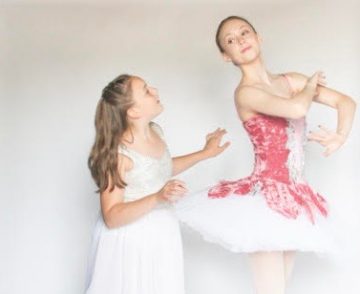
The Bowling Green Fine Arts School production with its gaggle of young dancers from tots to teens was a frolic. The school’s founder Sophia Jarrell and fellow choreographer Hayley Havener shaped a “Nutcracker” suitable to the corps of dancers they had. They adjusted the story to make up for a paucity of male dancers. They gave their dancers a chance to shine with choreography that set the bar high enough to challenge them, but calibrated so they could master it.
The school brought in Kelly Korfhage from Cleveland’s Verbs Ballet to dance the roles of the Snow Queen and the Sugar Plum Fairy, which she performed solo without the company of the usual cavalier.
She also served as guide for Masha (Clara in most other productions). The production excised any hint of romance between a prince and the young heroine. Watching Jane McCartney who played Masha seated with Korfhage as the various sweets danced before them was priceless. The audience could see the magic of the story unfold through her eyes.

The Toledo Ballet production also recruited professional dancers for key roles. Melissa Gelfin and Cervillo Miguel Amador from the Cincinnati Ballet were hired to dance the roles of the Snow Queen and King and the Sugar Plum Fairy and her Cavalier, though the performance I attended had advanced students dancing the Snow Queen and King roles.
When the professionals come on at the end for the Pas de Deux after so much fine dancing by the students, the audience gasps in realizing what all those young dancers are aspiring to. It’s as if their dreams burst onto stage in expressive motion.
That was on display ten-fold in Columbus.
With 19 performances, many dancers shared in the plum roles. Half dozen ballerinas played the Sugar Plum Fairy with five male dancers as her Cavalier.
BalletMet also adds a Grown Up Clara, who dances throughout Act II. Also, Herr Drosselmeyer plays a larger role than just being the strange figure who presents the Nutcracker, popping up through the ballet.
BalletMet also uses a tape narration recorded years ago, maybe for the original production, by Roger Moore, yes, the James Bond Roger Moore.
Both Toledo and Columbus used their city’s respective orchestras. (Bowling Green Fine Arts School used recorded tracks.) In Toledo with a one-weekend run, the full complement of the Toledo Symphony was in the pit.
Columbus had to economize with a smaller string section. Still all the colors came through — the majestic brass at the climax of the Pas de Deux, the piquant woodwind solos, the ringing accents of the celesta and delicacy of the harp.
For all the joys of watching the professionals though, BalletMet was sure to still get the kids front and center as well. The pages, played by the youngest dancers, were endearing. The audience was urged to gesture along with them, and when the routine was finished the youngsters applauded the audience’s efforts. Touches like this keep “The Nutcracker” a fixture of the holiday season.

